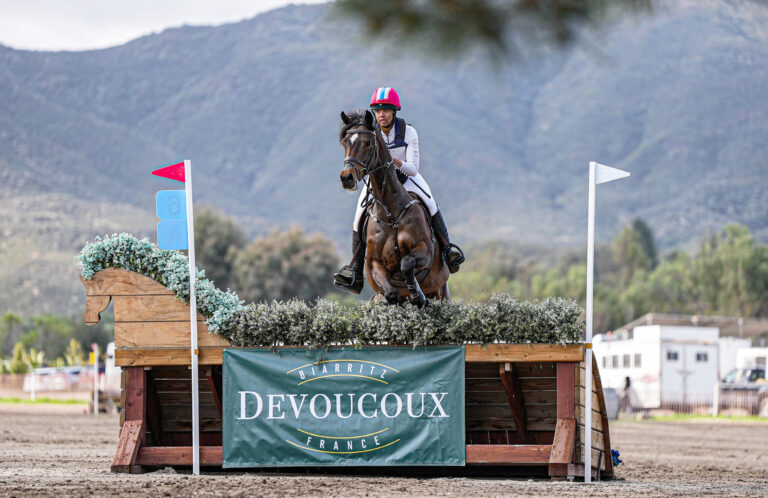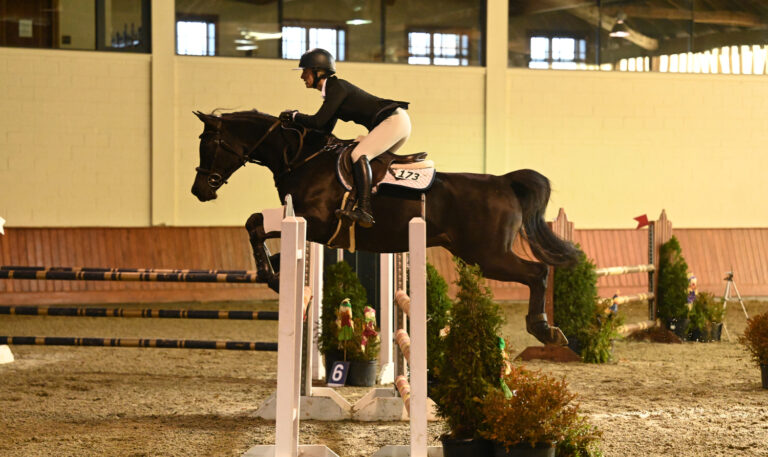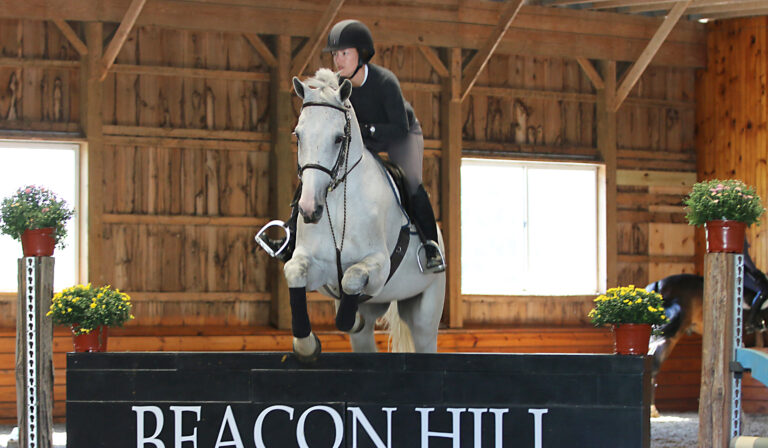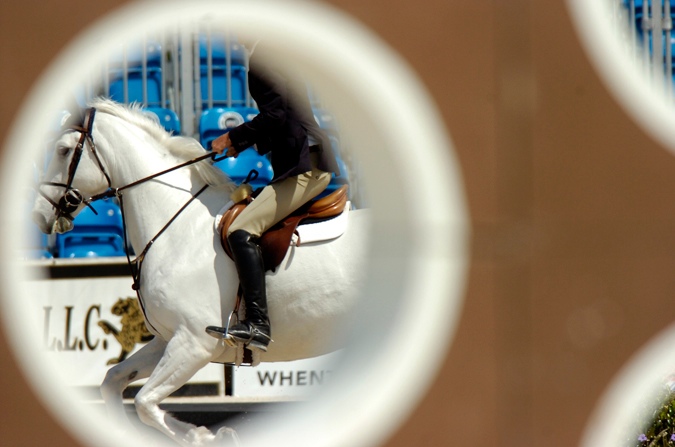Last month, I talked you through the essential early steps of an event horse’s cross-country water education—walking and trotting through water in a calm, relaxed manner. I emphasized the importance of keeping his initial schooling sessions simple and positive to build his confidence. This month, I’ll explain how to introduce additional elements to the water question following another logical, step-by-step program to continue expanding his education without losing his trust in you.
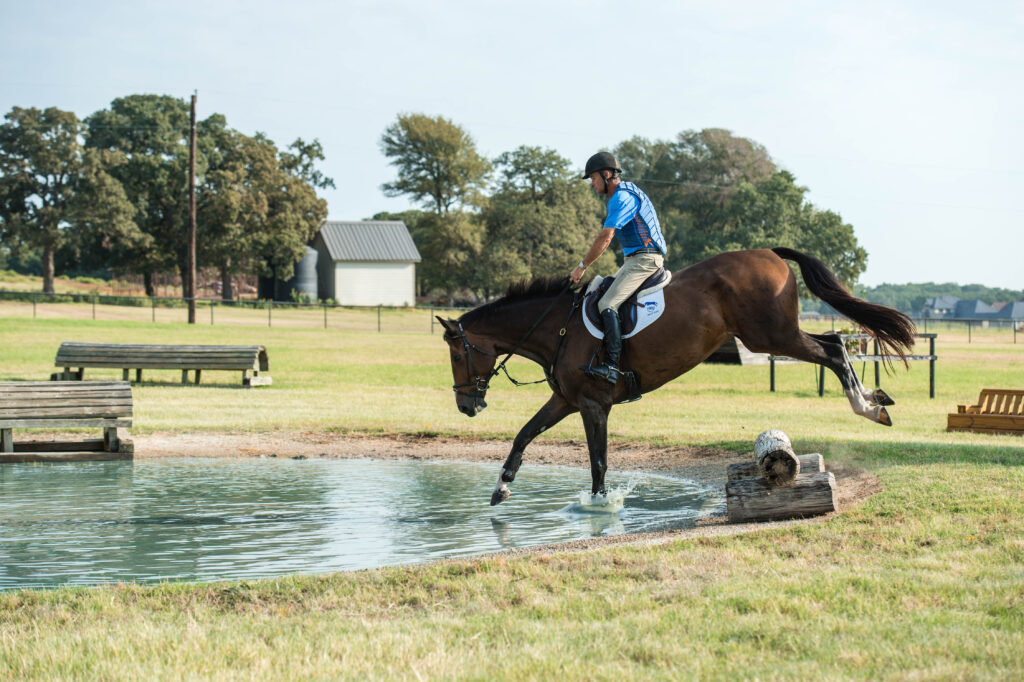
Jumps Into and Out of Water
Once your horse is walking and trotting confidently through water, the next step is to add an obstacle several strides beyond the water’s exit. It should be only a foot or two high so your horse can easily clear it at the trot, if necessary. A small log or rolltop that can be jumped in both directions is ideal, but a crossrail made of show-jumping standards and poles is fine, too. Set this fence 60 to 72 feet from the water. This is far enough away from the water that you won’t have to worry about getting an exact number of strides to it as you would in a related distance.
First introduce this fence as a jump after the water. Trot into and through the water just as I explained in Part 1 last month, maintaining a steady pace and keeping your horse organized and straight, but this time focus your eyes on the center of the jump. As you exit the water, ask your horse to pick up the canter. You may need a little more aggressive leg aid than usual because of the water’s effect on his impulsion. Then ride to the fence just as you would any other cross-country jump. Practice this several times.
Once your horse is comfortable and confident with this part of the exercise, you can jump it in the opposite direction before the water. Approach the jump at the canter but with a slightly deeper seat and more upright upper body than you would if you were jumping the same fence in the middle of a field. Because your horse will see the water behind the jump as he approaches it and, unlike you, won’t know how much space he’ll have between the jump and the water, he may slow down, add a stride or even break to trot. That’s OK! Just be prepared for that and continue to support him with your legs. After the jump, if he breaks to the trot at the water’s edge, that’s fine, too.
Eventually, you can put the three elements together: jump a fence in the approach, trot through the water, then finish with another fence after that. At this stage, don’t force your horse to canter into or through the water. Cantering into water is a much more advanced skill than many riders realize. It creates a disconcerting splash and requires time and practice to achieve without losing the rhythm and even stride length. Green horses are also more susceptible to treating the water’s edge as a placing rail when they approach in the canter, using it as an excuse to leap into or scamper across the water. Some even give the impression that they’re trying to walk on water. That’s why horses aren’t expected to canter into water until they reach Training level. By then, all of the good experiences your horse has had at the walk and trot will have prepared him for that challenge.
Having said that, if your horse is so comfortable with this exercise that he volunteers to canter through the water, let him do it. Just focus on keeping his stride steady and even while asking him to stay on your planned track to the exit jump.
The next lesson is introducing a jump at the water’s edge. A log small enough to trot over is ideal. As with the previous step, jump out over the log first: Trot into the water just as you have all along, then maintain your pace and rhythm to the jump. After that’s gone well several times, approach the log from the other direction, jumping into the water. Ride to it with the same deeper seat and more upright upper body that you used for the jump before the water, prepared for him to hesitate, and add a stride in response to the sight of the water behind the jump.
Introduce a Small Jump

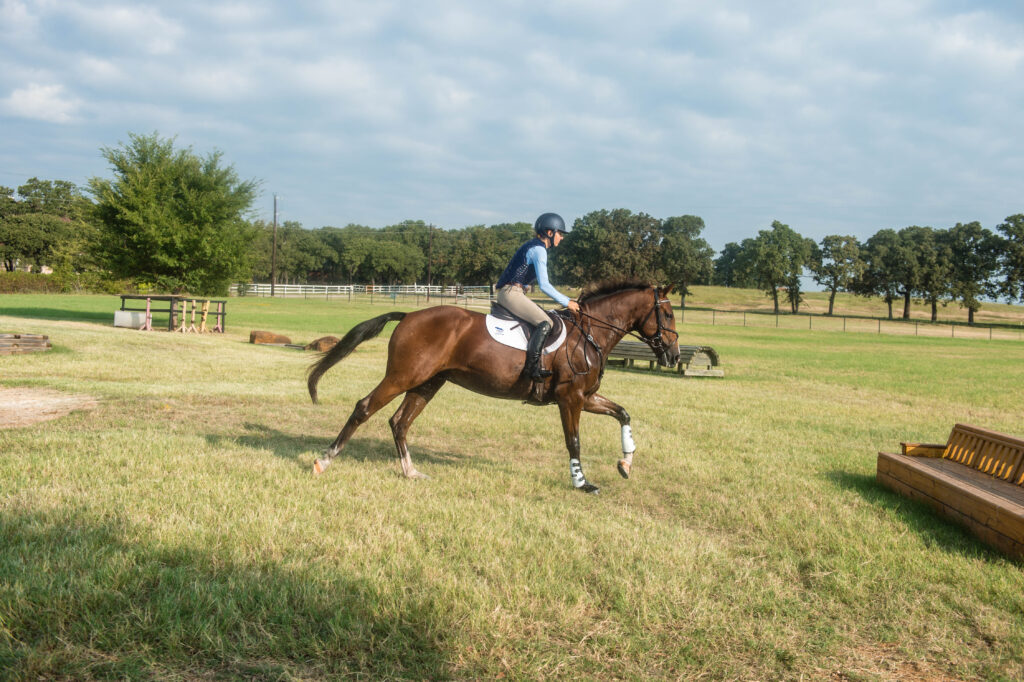
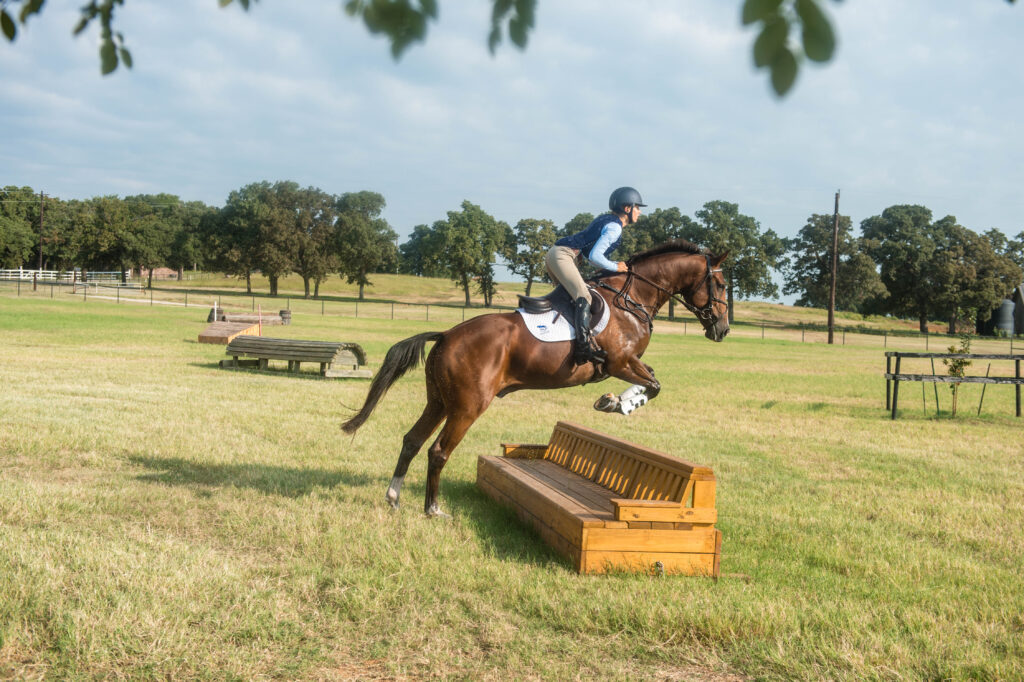
Jump to Water to Jump
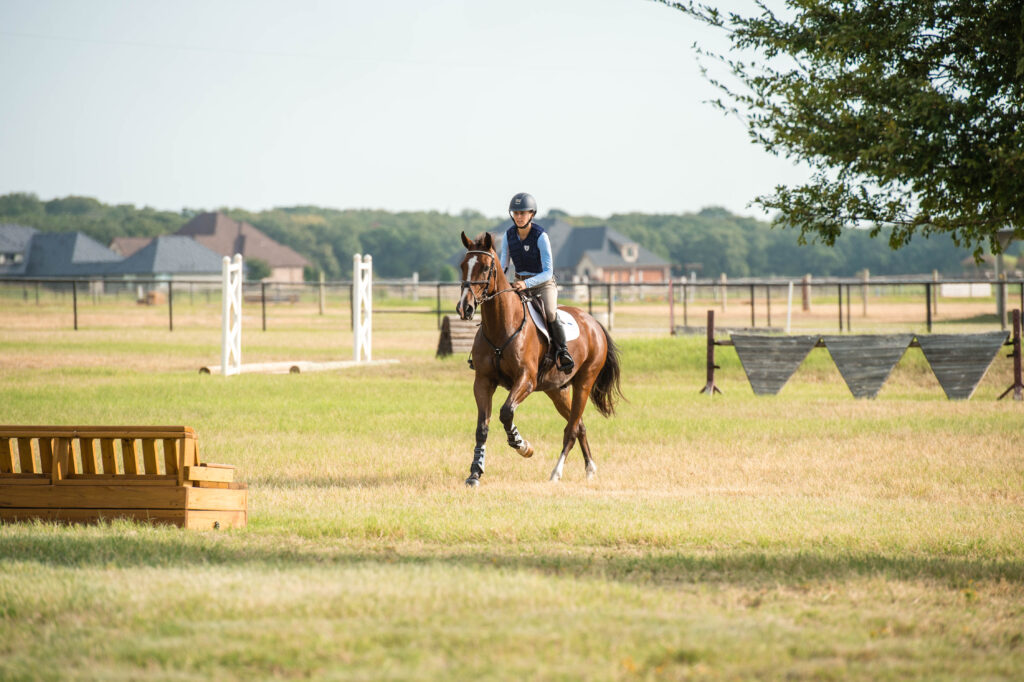
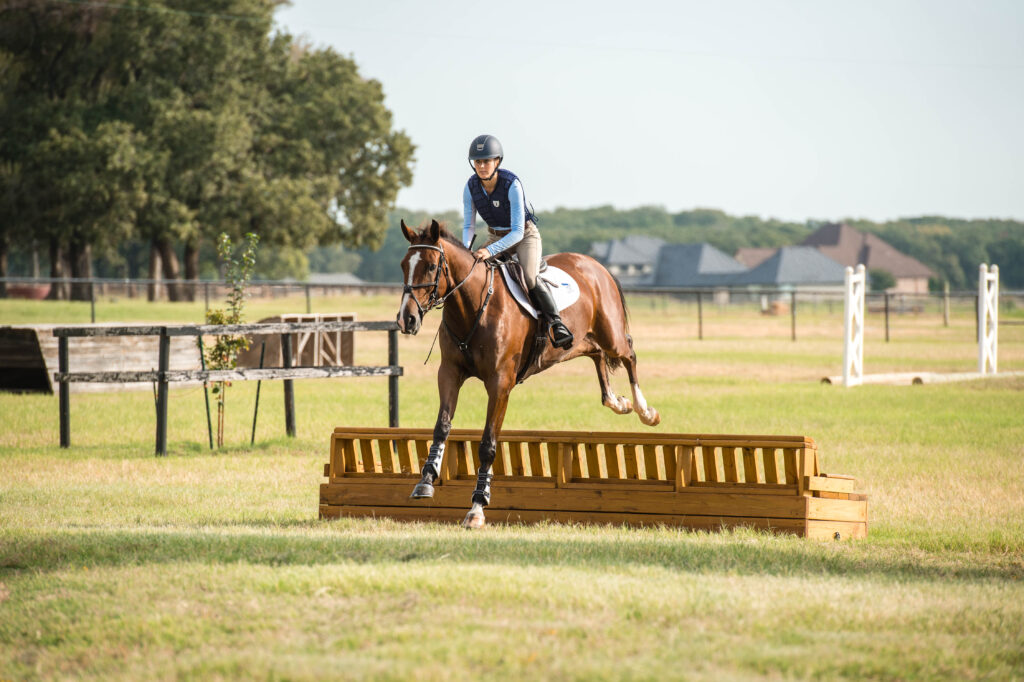
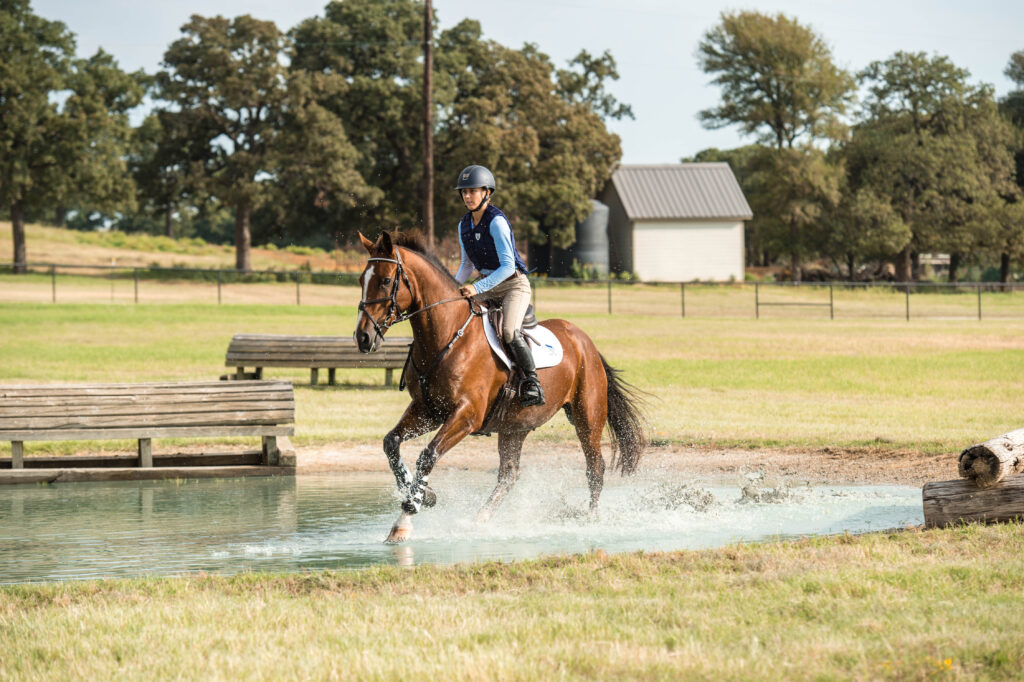

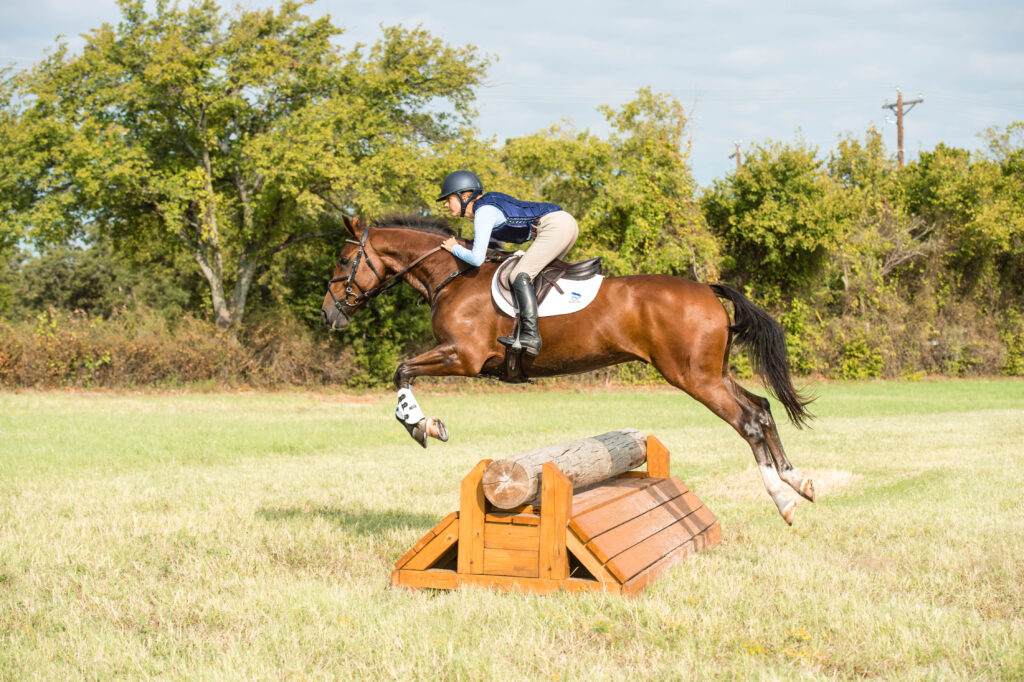
The Water’s Edge: Trot In, Jump Out
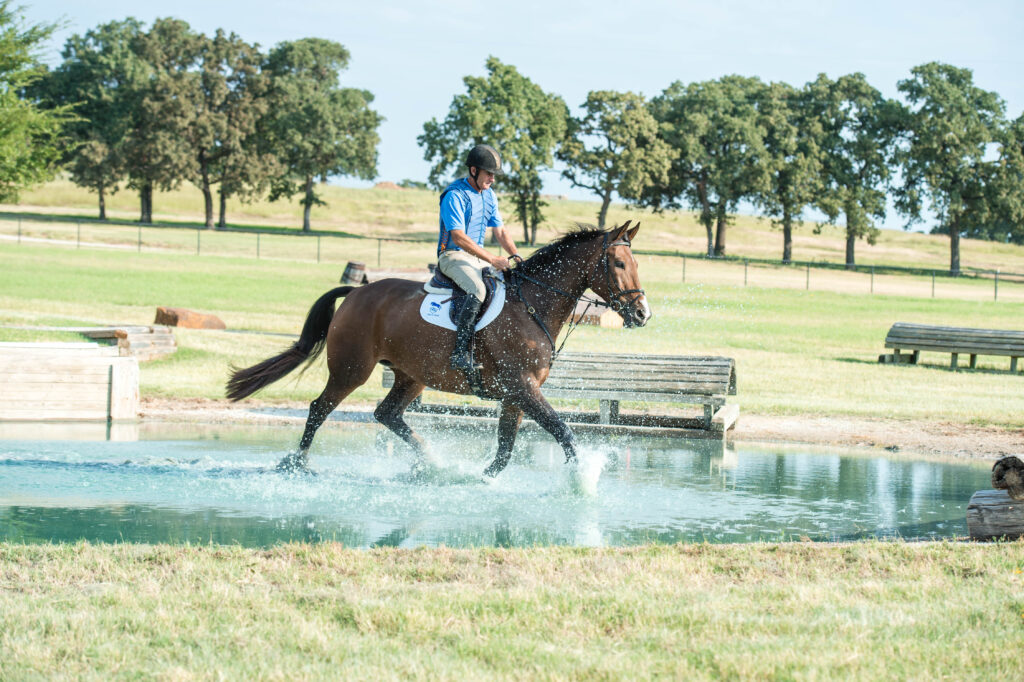
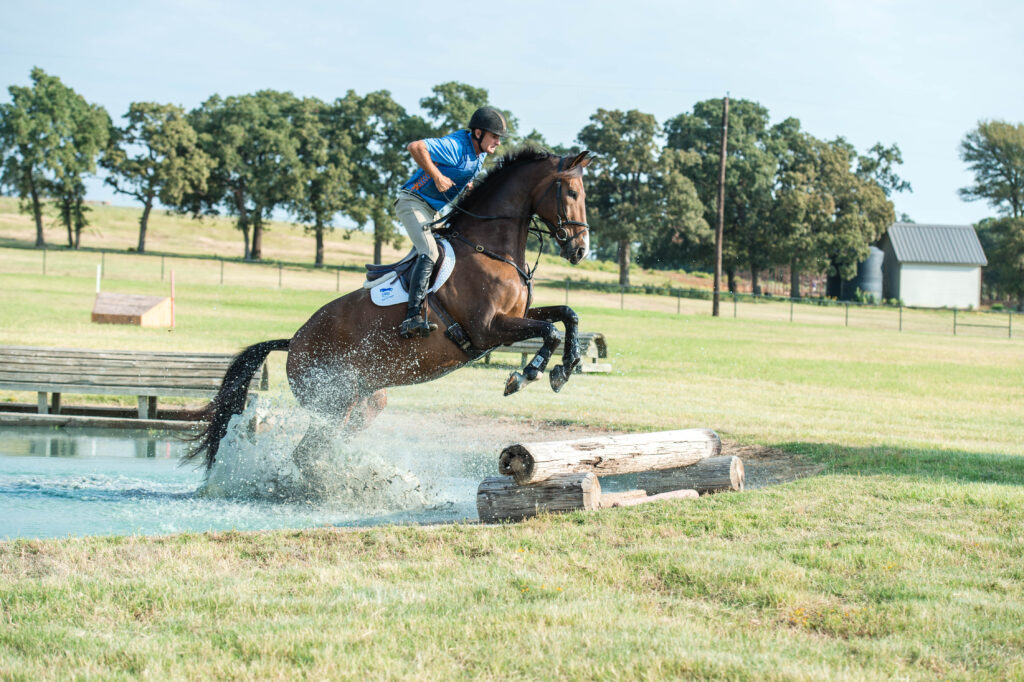

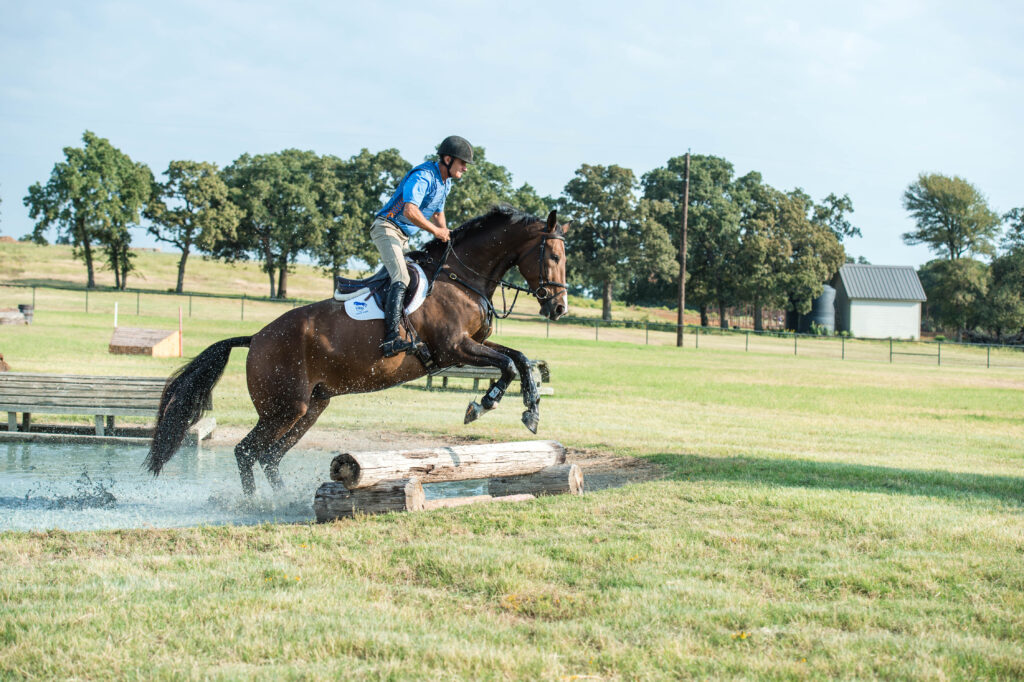
The Water’s Edge: Jump In

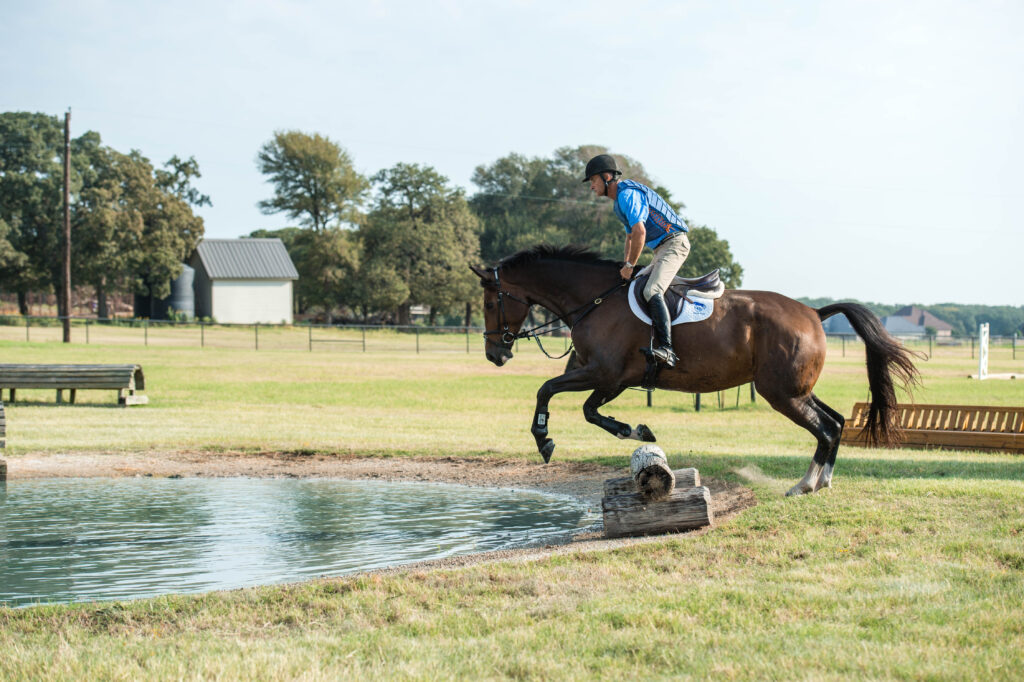
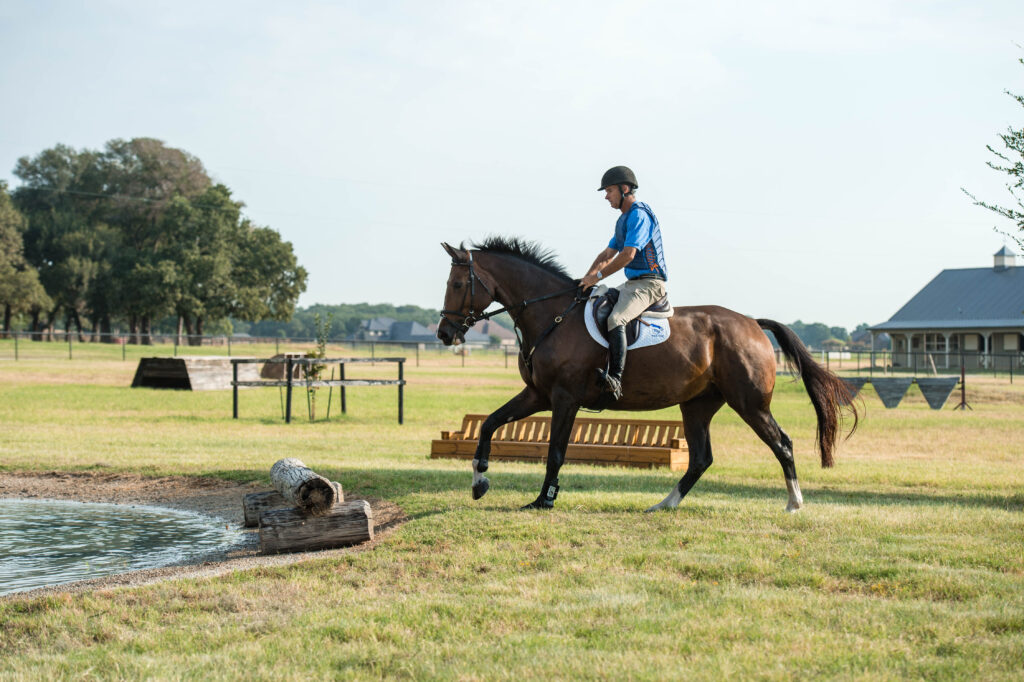
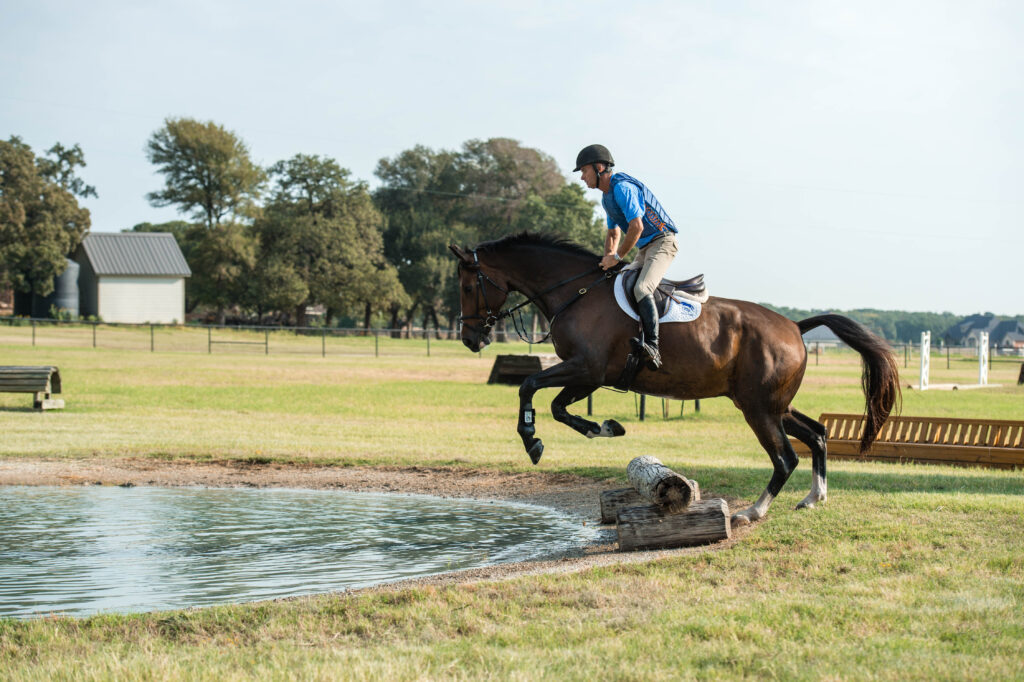
Continue the Logical Progression
Once your horse is trotting comfortably through water and jumping small obstacles before and after it, he should be ready to go to clinics and lower-level competitions. Even then, if extended access to the course is allowed, consider scheduling an extra day after the clinic or event to practice the water jump one more time.
Notice that I haven’t mentioned banks. Jumping banks into and—especially—out of water is quite difficult for horses and can be dangerous if attempted without all of the skills I’ve described in this article. Teaching your horse to jump banks and the wide variety of other water-related questions that he’ll face through the levels is best done in a progressive, step-by-step manner, always building on positive experiences and reinforcing them with repeated follow-up sessions. Give your horse plenty of time to master each new challenge. These stages in his education should span years, not weeks or months.
If at any point in your horse’s career, he shows signs of being overly impressed with a water question—for example, by making a bigger-than-necessary leap down a drop bank into the water—always be prepared to take a step back in his training to remind him that water is easy and fun. Make time to review the fundamental lessons I described earlier. No matter what the financial or logistical costs, it will be well worth the investment.
About Mike Huber

Veteran eventer Mike Huber represented the U.S. in three World Championships and one Olympic Games. At the 1987 Pan American Games, he and Quartermaster won both the individual and team gold medals. A past president of the U.S. Eventing Association, former chairman of the U.S. Equestrian Federation Eventing High Performance Committee and longstanding member of the USEF Eventing Technical Committee, Mike also served as an Olympic selector from 1996 to 2000 and from 2009 to 2012. He owns and operates Gold Chip Stables—named for the little mare he competed in the 1980 Alternate Olympics—in Bartonville, Texas. A USEA-certified Level IV instructor, he gives many clinics nationwide. The USEA formally inducted him into its Eventing Hall of Fame in 2015.
This article originally appeared in the May 2016 issue of Practical Horseman.





